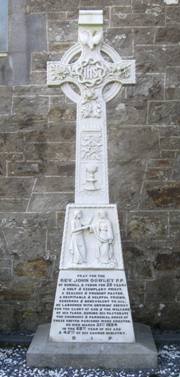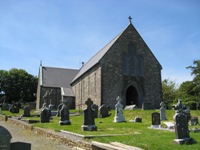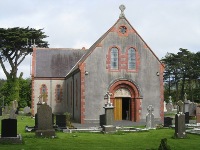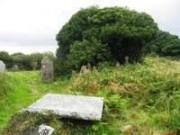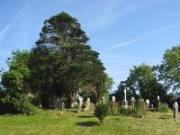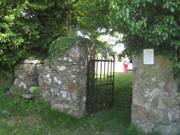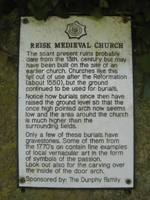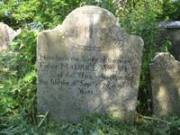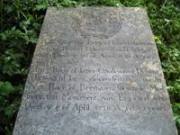Monthly Archives: February 2014
Contact Us Form
Our Address
PARISH OFFICE
Dunhill Church
Dunhill
Co. Waterford
Ireland
Telephone/Fax: 051 396892
www.dunhillandfenorparish.ie
Send us a message
[contact-form-7 id=”3230″ title=”Contact form 1″]
Parish administration Contacts side
You can contact us …
by telephone …
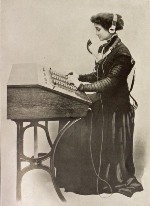
by e-mail …

or by letter …

or call in to the parish office …
2010 Mount Melleray
2010 Mount Melleray
Lots of photographs of parish life were taken during the year 2010. We have arranged these photographs into galleries to make viewing easier and more enjoyable. The gallery of interest may be chosen from the menu on the left. Other galleries for later years are also available.

Rev. Fr. John Dowley side
Very Rev. John Dowley
Very Rev. John Dowley
Very Rev. John Dowley was appointed to Dunhill/Fenor on January 3, 1875. He built the Parochial House in Dunhill, Dunhill Church, the Teacher’s Residence in Fenor, and Fenor Church.
He died on March 21, 1894, in his 68th year and the 45th year of his Sacred Ministry after nineteen years in this parish. He is buried in Dunhill Churchyard. His family home was in Seskin, Carrick-on-Suir, where the tombstone of the Dowley family still lies in Carrickbeg.
Fr. Dowley’s sister Catherine married Michael Fitzgerald of Ballyvalican, Portlaw. Her daughter, Joanna O’Donnell (nee Fitzgerald) Ballycahane, Portlaw, was the grandmother of Kathleen Fitzgerald (Mrs. Eddie Fitzgerald) Ballybellon, Fenor. Fr. Dowley’s grandniece and grandnephew are Josie and Willie Fitzgerald, Kilmovee, Portlaw.
The Second Millennium side
The Second Millennium
The Second Millennium
by Sorcha Hartley
One thousand years ago, the population of the entire country was approximately 500,000. Many of these people lived in or near the towns, which had been established by the Norsemen during the previous century. Rural areas like our own parish were sparsely populated. Ireland has been described at the dawn of the last millennium, as a land full of woods, bogs and lakes. Wild pigs were common. Woods and mountains contained large numbers of red deer as well as wolves, which made it necessary for the livestock to be brought in at night, into bawns [bawn or badhún: the defensive wall surrounding an Irish tower house] or enclosures, or else into the dwelling houses themselves. Hedges and fences were very rare, and in most areas, enclosed fields seem to have been almost unknown.
The view which one now sees from Dunhill castle differs a great deal from that which must have been enjoyed by the Barons of Dunhill. These were the descendants of Sir Robert le Poher, who accompanied Henry II when he landed at Crooke, near Passage East, on the 17th October, 1171.
Our own parish of Dunhill and Fenor corresponds to the three ancient parishes of Dunhill, Reisk and Islandkeane, which were united over 300 years ago. This is a maritime parish and was, up to the beginning of the 20th century, a breac Gaeltacht. It covers an area of 13,679 acres and had a population of 952 at a parish census taken in April 1974.
Each of the three ancient parishes had its own pre-Reformation church, the ruins of which are still standing today. At least nine early Celtic church sites have been found and identified in the parish – Kilfarrassey, Ballylenane, Killown, Killsteague, Kilcannon, Smoor, Ballydermody, Ballyphillip, and Kilcarton.
The ancient parish church of Dunhill, situated about 300 yards to the west of Dunhill Castle, was of considerable size. It was erected about the beginning of the 13th century to replace the small Celtic churches in the area. The east gable of the church still stands, densely covered with ivy.
During the penal times, the people of our parish, in company with the majority of the Irish population, had to endure the hardships and rigours of religious persecution. At that time the church of the parish was a thatched chapel, which stood at Cappagh, on the townland of Shanaclune. This chapel at Cappagh was demolished in 1798, and replaced by another thatched chapel on the site of the present church. After a short time this, in turn, was replaced by the slate-roofed church, which served the parish until 1883.
During the years of the great famine, Fr. Michael Walsh was parish priest of our parish. In 1857, just a few years after the famine, the women of the parish gave their jewellery to be made into a beautiful golden chalice in thanksgiving for having survived this dreadful ordeal. This is the chalice which Fr. Purcell will use during our Mass today.
The building of our present church here at Dunhill commenced on March 1, 1883. This church was built outside the walls of the previous church.
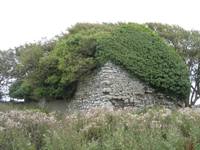 The ruin of the old parish church at Islandkane stands within its ancient cemetery. The total length of this small, ancient church was only 56 ft. Some of the stones from this church were removed and used in the building of Newtown House near Tramore. A silver chalice, which bears the inscription ‘The gift of Mr. Robert Power to the Parish of Island Kane in the County of Waterford, the 17th of April 1742’ is now kept in the Church of the Immaculate Conception at Fenor.
The ruin of the old parish church at Islandkane stands within its ancient cemetery. The total length of this small, ancient church was only 56 ft. Some of the stones from this church were removed and used in the building of Newtown House near Tramore. A silver chalice, which bears the inscription ‘The gift of Mr. Robert Power to the Parish of Island Kane in the County of Waterford, the 17th of April 1742’ is now kept in the Church of the Immaculate Conception at Fenor.
The church at Fenor was erected in 1893 on the site of the previous church. The old church at Fenor was a thatched chapel and was under the patronage of Our Lady’s Nativity.
Nothing now remains of the walls of the parish church at Reisk except the middle gable. This church is very old and incorporated an archway built by the Normans, probably about the year 1200, much later than the rest of the church. In any case Reisk was a church of more than ordinary importance and was one of the largest in the Barony. A silver chalice inscribed ‘The gift of Mr. Geoffrey Hearn and Mrs. Margaret Hearn to the parish of Reisk’ is now kept here in Dunhill church.
Dún Aill, one of the three villages in the Parish of Dunhill and Fenor, derives its name from the ancient fortress, or Dún, which was situated on the rock where the castle now stands, commanding a magnificent view of the surrounding countryside.
During the first half of the 20th century, John Williams described some of the principal surroundings of Dunhill Castle and the story of the siege of the castle, in verse.
The Ancient Church reisk 2 side
Reisk Church (2)
The Ancient Church at Reisk
by Mgr. Michael Olden
From the book “Fenor – It’s Facts, Faces, and Folklore, 1894-1994.”
The following article is an edited version of the excellent talk given by Rt. Rev. Monsignor Michael Olden on August 25th 1993 in the ancient churchyard at Reisk. The talk was to mark the occasion of the first Mass to be celebrated on this historic site since it was restored by voluntary labour during the early months of that year.
Monsignor Olden kindly gave his permission to allow his lecture to be published at this time so, as far as possible, we will use his own words but, as we have put his talk in chronological order it will lose some of the intimacy and smoothness which made the talk on that lovely autumn evening so memorable.
In the following extract Monsignor Olden deals with the early history of the area:
“Back in pre-history, pre-Christian Reisk was an uncommonly interesting place, with strong pagan connections. In the parish of Reisk there are place names like Ardnahoe which means the Ridge of the Grave (the grave, of course, was pre-Christian). In Ballybrunnack there is a field called the Breagáns, or the Place of the Cairn (there is a cairn on the hill there). Páirc-a-Leasa is the Field of the Lios and in Ballymote there is a fine pillar-stone about ten feet high. In Ballinclough (the Place of Stone) there is a remarkable dallán on Mr. Crotty’s farm. There is a field called Bán-a-Liagán (the Field of the Pillar-stone) and in Ballyvellan there were two or three pillar-stones, one with ogham inscriptions. In Carrickvaraghan there is a field called Bán-a-Leacht and that means the Field of the Cairn. In Matthewstown there is a very interesting grave called Leaba-Thomáis-Mhic Chaba or Thomas McCabe’s Grave. There is a grave on Inis Meán (Aran Island) with the same name. Historians consider that this must have been part of an old folk-story, and it is strange that the name appears here in Reisk.”
Monsignor Olden then dealt with the coming of Christianity to the area:
“We do indeed stand in a historic but also a holy place. This would have been an important religious site even before Patrician Christianity reached the area. It is almost certain that Christianity was preached here before St. Patrick arrived in Ireland in 432 AD. This part of Ireland, the Southeast, was relatively close to Wales and England, and we know that they had Christianity at least one hundred years before we had. Contact between Southeast Ireland and Southwest Britain was widespread so it is easy to see how the new religion would take root in this region long before it became common in the rest of Ireland. And it is interesting that Dunhill had, as its Patron Saint, the Welsh Saint David. St. Declan’s interest would also have been felt in this part of Ireland.”
The speaker then gave his views and understanding of the church ruins as they remain today:
 “When we look at the Church building we see that it is a remarkably large one for its time. It is 68 feet long and 19 feet wide and would have been a rectangular building without transepts. One of the peculiarities of the church is the arch in the middle. This is an interesting feature and was built by the Normans. The habit at that time was to divide the ordinary people from the sanctuary or choir. That arch was erected around the year 1200 AD or slightly later (much later than the rest of the church). In fact, there is evidence to show that the present ruins are not those of the first church on the site. If you walk down around the present walls you will see the signs of the primitive foundation which probably dates from the 7th or 8th century. Also, near the gate, there is a bullán (water font). It is a very unusual cone-shaped stone with a hole in the bottom and would have been used to dispose of water used during the Mass. It was once ornamented with carving but this is now eroded. This font is a very early one and probably dates from the 8th or 9th century. Inserted into the arch in the church is a stone from the older building with a primitive face looking towards the altar.”
“When we look at the Church building we see that it is a remarkably large one for its time. It is 68 feet long and 19 feet wide and would have been a rectangular building without transepts. One of the peculiarities of the church is the arch in the middle. This is an interesting feature and was built by the Normans. The habit at that time was to divide the ordinary people from the sanctuary or choir. That arch was erected around the year 1200 AD or slightly later (much later than the rest of the church). In fact, there is evidence to show that the present ruins are not those of the first church on the site. If you walk down around the present walls you will see the signs of the primitive foundation which probably dates from the 7th or 8th century. Also, near the gate, there is a bullán (water font). It is a very unusual cone-shaped stone with a hole in the bottom and would have been used to dispose of water used during the Mass. It was once ornamented with carving but this is now eroded. This font is a very early one and probably dates from the 8th or 9th century. Inserted into the arch in the church is a stone from the older building with a primitive face looking towards the altar.”
Other very early church sites in the parish of Reisk were also mentioned by Monsignor olden:
“In the ancient parish of Reisk there are many other old church sites. In Meehan’s in Ballydarmody there was a cill (a small church) and in Ballyphilip there was a cillín. In Kilcarton, by the lake, there was also an ancient church, while over in Cloonfada there is a rock called Carraig a’ Shagairt (the Priest’s Rock ). So, within this area are many sites that bear witness to the Influence of Christianity.”
The fact that Reisk lies in Power Territory was also mentioned:
“This is also Power country and their greatest stronghold was at Dunhill. The Le Poer family came over in the 12th century and the area is still strongly identified with the Powers. Place names like Ballyphilip, Ballymorris and Matthewstown are all associated with that family. Matthew, Philip and Maurice being all Power names.
Monsignor Olden then discussed the importance of Reisk in early Church history:
Reisk was recognised as a parish unit well before the year 1200 AD. Indeed when the Crusaders were trying to recapture the Holy places from the Infidels, Pope Nicholas imposed a tax on every parish in the Christian world to defray the cost. On the Taxation Lists from the year 1291 it is recorded that a levy of £6 was imposed on the Rector of Reisk and £4 on the Vicar. Whether they paid or not is another matter! In 1685, when James Fennel was P.P. here, Reisk was considered one of the important parishes of the Diocese of Waterford. A report of Bishop Brennan says that there are 28 parishes in Waterford but that only five of them have parish priests and one of these was Reisk, which gives an idea of its importance.
Monsignor Olden gave a short account of the earliest priests who served in this old parish:
“The earliest priest that was known of was Father Quilty P P in 1588. This was not long after the Reformation. We also know of four priests who are buried here in this churchyard. There is a Rev. James Fennel who died on August 28th, 1747, aged 89 years. Beside him lie the remains of Rev. Maurice Walshe who died on September 8th, 1778, aged 80 years. Then, in the choir of the church there is a stone to the memory of Rev. Maurice Ahearne, who died on June 12th, 1763, aged 49 years. There is another stone erected to the memory of Rev. John Meeney who died on June 27th, 1800. The inscription on his tomb says, ‘The prayers of the widow and orphan and the blessings of this flock constitute his monument.’ The Rev. James Fennell, who died in 1747, was ordained in the Butler Castle of Rehill in the parish of Ballylooby. He was ordained by Dr. John Brennan who was a famous bishop of the time and who was a close friend of Oliver Plunkett. His brother, Fr. John Fennel, was also a P.P. of this parish. They both lived at Carrickavantry and were believed to be natives of the area.”
The speaker then drew attention to the well-known O’Sullivan tomb in the churchyard:
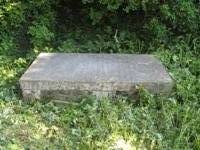 “This is the unusual connection of this graveyard with the O’Sullivan-Béara of West Cork. The reason for this connection is difficult to understand. The O’Sullivan mansion stood at Bán a’ Halla (the Field of the Hall) in Ballylegget. The inscription on the O’Sullivan tomb says, ‘Here lies the body of James O’Sullivan, son of Robert O’Sullivan of Ballylegget, who died on April 26th, 1736, aged 21 years.”
“This is the unusual connection of this graveyard with the O’Sullivan-Béara of West Cork. The reason for this connection is difficult to understand. The O’Sullivan mansion stood at Bán a’ Halla (the Field of the Hall) in Ballylegget. The inscription on the O’Sullivan tomb says, ‘Here lies the body of James O’Sullivan, son of Robert O’Sullivan of Ballylegget, who died on April 26th, 1736, aged 21 years.”
Monsignor Olden’s talk concluded as follows:
“I’m very happy to be here in this sacred and ancient place. Indeed, I have personal reasons because I believe that Reisk churchyard is on Dunphy land and I was baptised a long time ago by Fr. Tom Dunphy from this very place. I hadn’t seen the churchyard before it was cleaned and I must say that it is a tribute to Fr. Purcell and to the many others who helped to bring it back to its present state. It is a living memorial, to inspire us on our faith-pilgrimage through life. Now that it is renovated, it is a place you might well come to on a Sunday evening to sit and look at the graves, say a prayer and remember, not just the architecture or the tombs, but remember that the dead are with God, and that we, in looking to them for inspiration and help, are doing a sacred and holy thing. You are surely on ancient and holy ground here, and from it may there come the inspiration for all of us to journey a bit more firmly, a bit more steadily, on our pilgrim way through life.”

 Recent Parish Newsletters
Recent Parish Newsletters









